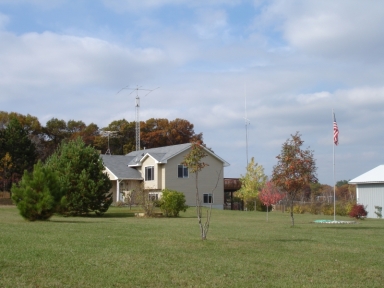
This is my home QTH in Bradford Township near Cambridge, MN, USA.
Amateur Radio Station
WC0M
(Formerly: WC0EM, WF0GM)
My Station and A Few Photos
Dell XPS 8930 Computer w/Windows 10
Professional
Intel Core i7 9700 @ 3 GHz 8 Core CPU
16GB of DDR4-2666 memory
1TB NVMe M,2 Solid State Drive
NVIDIA GeForce GTX 1660Ti GPU w/6GB GDDR6 memory;
2 each 24 inch Dell U2412M LCD monitor and 1 Samsung SyncMaster 2343BWX LCD
monitor
Seagate 8TB Internal HDD
Western Digital 8TB External USB HDD
Color Printer: Canon Pixma MX920 All-In-One Color Printer/Copier/Scanner/Fax
Amateur Radio Station Windows Software:
Logging: I am currently using Logger32 for my main logging program. The program is very involved and has a learning curve,
but that also means it is very powerful! But the main thing is that it is FREE. And there is a users group set up on groups.io.
Logger32 is excellent! There is plenty of info in the help file for learning how to use the program. Like any other powerful software, you must apply yourself to learning it.
Check out FREE software by WC0M:
UTC Clock and ID Reminder: HamTimer
TS-2000 Auto Mode Memory Manager: TS-2000_AutoMode
Station Accessory Control Software: ComSwitcherI enjoy the solar reports at 18 minutes past the hour broadcast on WWV at 2.5, 5, 10, 15 and 20 MHz. Since it is announced only once each hour, I wanted to be reminded of when the announcement was coming so I would not miss it. I use a small program called HamTimer that I have written in Visual Basic.NET. I use it to remind me to get on frequency so I won't miss the report. It also has a 10 minute Station ID Reminder that I like to use for rag chewing too. I am making the program available as FREEWARE to anyone who wants it. Download a copy of HamTimer for yourself if you want. It will let you use any valid WAV file. You can create your own if you like. Otherwise there are a couple of options supplied with the program when it is installed.
Mapping: Another great set of software is the DX Atlas suite by Alex VE3NEA. Mapping, propagation prediction, and more. Check out his web site at http://www.dxatlas.com
PSK31: I use a TigerTronics SignaLink USB with Integrated USB Sound Card interface for working the digital modes.
Logger32 also covers this sound card mode which uses the free MMVARI engine.
But I also really like DigiPan for PSK31 - and it is Freeware too.
Check out the web site at http://www.digipan.net to see for yourself how easy and fun it can be to get on PSK31.FT8/FT4: I prefer JTDX over WSJT-X for FT8 because of the GUI, but either program is great for working these modes. If you have not tried FT8/FT4, etc, you should!
SSTV: Slow Scan Television is so easy with the sound card software that is out there. I use MMSSTV written by a Japanese ham JE3HHT, Makoto Mori. This is an excellent program that is not only user friendly but FREE! Go to the web site and download your copy:
http://hamsoft.ca/Beam Headings and Propagation Prediction: Logger32 also covers this for me, but I found a couple of other great programs for this purpose. Visit http://www.dxlabsuite.com/ to check them out. There are several posted there as a suite of programs that work together and/or individually, sure to please the DX enthusiast. And they are also FREE!
Logger32 keeps very good records for me for several awards including WAS.

This is my home QTH in Bradford Township near Cambridge, MN, USA.
Antennas:
During the summer of 2007, I built my first tower!
Click here for more photos, and to read the full story
of my tower installation.
It is a Glen Martin Engineering Model M-1850A.
The tower supports my Cushcraft A3s tri-band beam for 10, 15 and 20 meters, as
well as
a dual band dipole for 80 and 17 meters.
I also have a
Comet GP-9M, 2m/70cm Dual Band Vertical and
40m/75m Dual Inverted V Dipoles
(mounted on a 36' Radio Shack telescopic
mast, bolted to the corner of the deck)
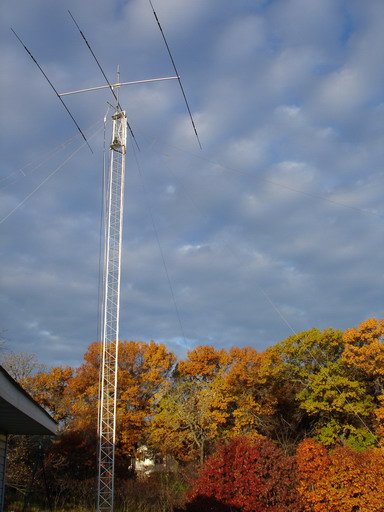
A view of the beam and tower on a beautiful Autumn day.
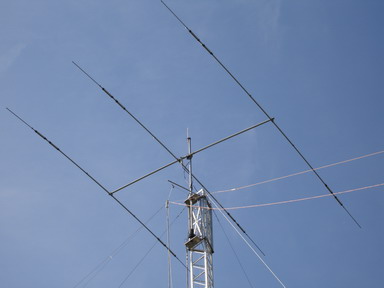
Here's a closer look at the Cushcraft A3S and dipole.
The rotor is a Yaesu model G-1000DXA.
The wire antenna is a dual bander for 17 meters and the low end of 80 meters.
See the full account of my tower installation here.
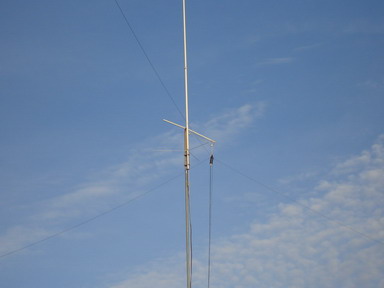
Here is a closer look at the antennas on the telescoping mast bolted off of the
corner of my deck.
The vertical is for 2m/70cm local hamming.
Four wires are suspended from the Bencher Balun at the end of the feed line
making my other multi-band dipole.
It is naturally resonant on 75m and 40m phone, and 15m CW.
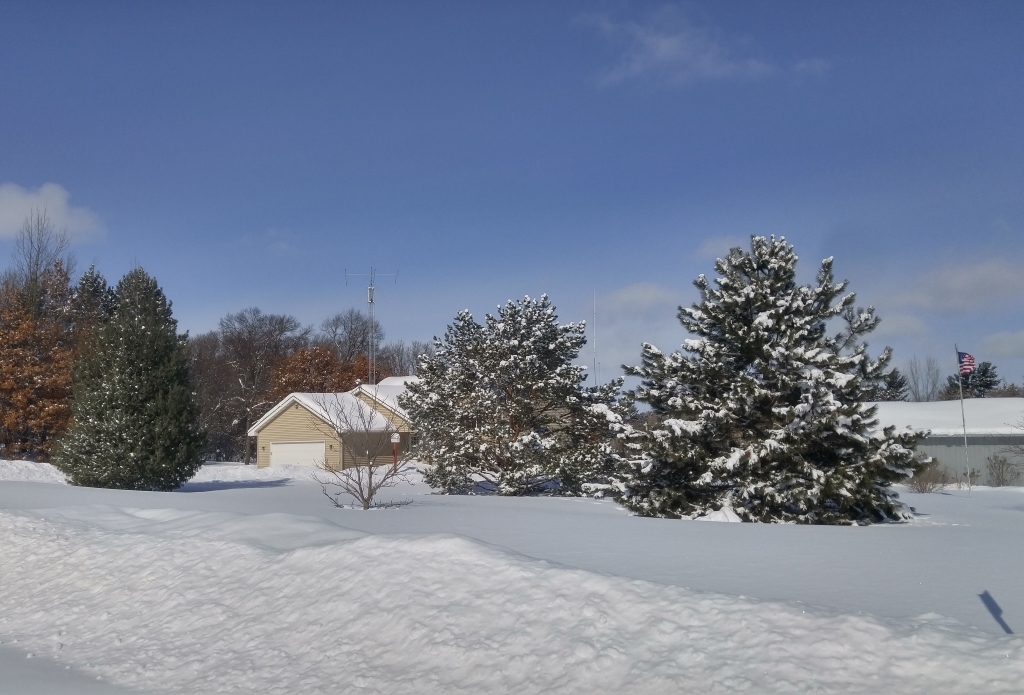
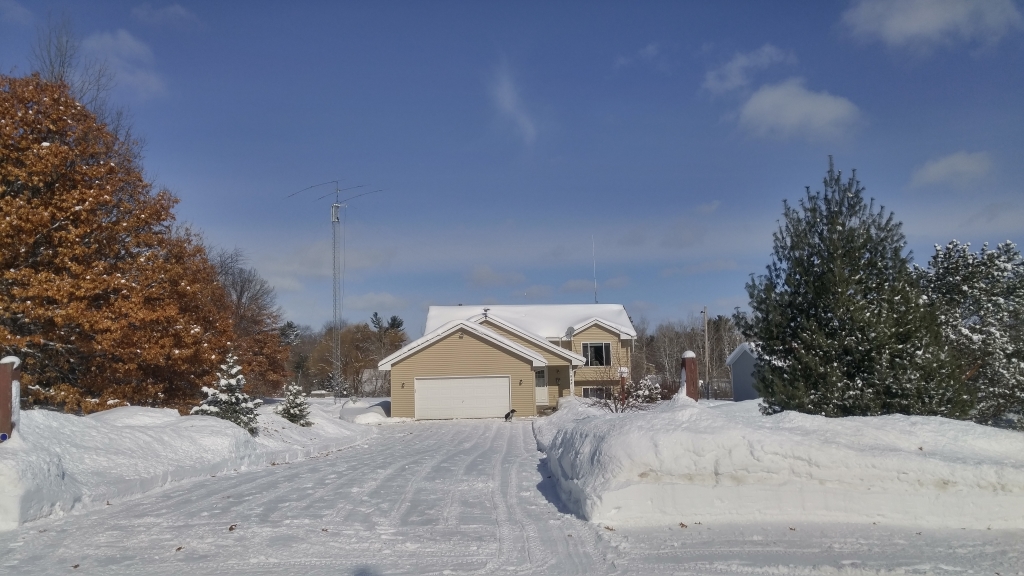
WC0M during the Winter Season
Radios and Station Accessories:
Shelf: (L to R)
Heath "Cantenna" Legal Limit Dummy Load
Astron RS-35M DC Power Supply;
Heathkit HM-2140 HF SWR/Watt meter
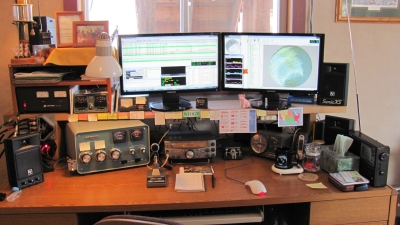
The shack.
Desktop: (L to R)
Yaesu VX-7R 6m/2m/70cm Tri-band HT;
Heathkit SB221, 10-80 meter, linear amplifier
Kenwood MC-60A Desktop Microphone
Kenwood TS-2000 HF/6m/2m/70cm All-Mode Transceiver w/computer interface;
MFJ Electronic Keyer/Bencher Paddle Combo
Yaesu G-1000DXA Antenna Rotor Controller
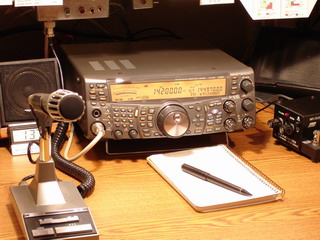
Kenwood TS-2000 with MC-60A microphone &
MFJ/Bencher paddle combo.
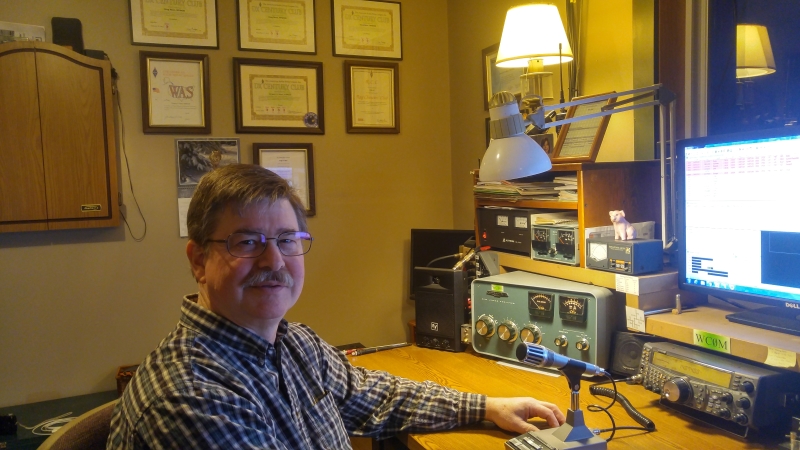
In the operator's chair.
Emergency Backup:
Coleman Powermate Powerbase 5000 watt generator
Portable Emergency Backup power. Great for Field Day!